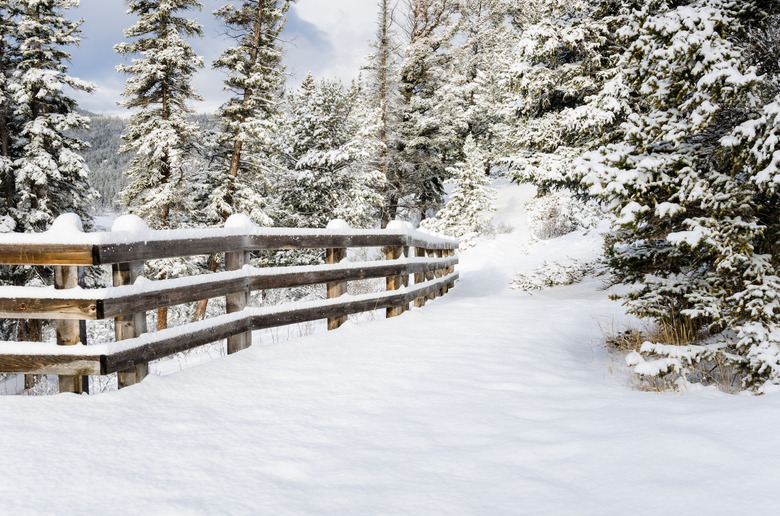How To Prevent Frost Heave In Fence Posts
We may receive a commission on purchases made from links.
When building a fence, proper installation is key to preventing frost heave in fence posts. Frost heave happens when water freezes in the soil and then the soil thaws out. The resulting pressure heaves the fence posts out of the ground over time. The best way to prevent frost heave in fence posts is to set them on a drainage bed prior to pouring the concrete. Plan where you want the fence posts and then call the utility companies prior to digging the first hole so they can mark where gas and electrical lines run.
Dig the Hole
1. Dig the Initial Hole
Start digging fence post holes at least 2 feet deep with a post hole digger. A post hole digger resembles two small spade shovels that are connected together. One of the best ways to prevent frost heave in fence posts is to dig the hole deeper than the frost line in your area. Research the local frost level and dig the holes at least 6 inches deeper. The style and height of the fence is also a factor. A tall, heavy fence generally needs deeper post holes. The deeper the hole, the more stable your fence.
2. Expand the Hole
Dig around the initial hole with a spade shovel and make the hole 10 inches in diameter and 1 foot down. A spade shovel has a rounded tip.
3. Create a Bell Shape
Create a bell shape as you dig the remainder of the hole. When the bottom of the hole is larger in diameter than the top of the hole, the concrete setting is less likely to "push up" out of the soil.
Lay the Drainage Bed
1. Add Pea Gravel
Pour a 3/8-inch-deep layer of pea gravel into the bottom of the hole. Pea gravel is small pebbles that provide a firm foundation for the bottom of the post. Larger gravel tends to not allow you to level the top of the gravel enough to level the post.
2. Spread the Pea Gravel
Spread the pea gravel evenly across the bottom using a paint stick or similar object. When it rains, the water seeps past the post and concrete to the bottom of the post. The pea gravel allows the water to drain from under the post. This function not only prevents frost heave, but also protects the bottom of your fence post from rotting due to water buildup.
3. Mix the Concrete
Mix the concrete in a wheelbarrow or 5-gallon bucket according to the bag directions Combine the specified amounts of concrete mix with water and stir with a garden hoe until the concrete is a slightly thick, pourable consistency.
Set the Fence Posts
1. Set the Fence Posts in the Hole
Set the fence post inside the center of the hole. Ask a friend to hold the post steady as you check the levelness. Set a 4-foot level on each side of the post to ensure the post is level. Pour another 6 inches of pea gravel into the hole around the post.
2. Check for Level
Check the levelness of the post again and brace the post on two sides. Nail boards near the top on two adjoining sides of the post and allow the opposite end of the boards to rest on the ground at a 90-degree angle. Recheck the levelness of the fence post.
3. Pour in Concrete
Pour the concrete mix into the hole until it is 6 inches from the top of the hole. Stab the concrete with the spade shovel or a stick to remove any air bubbles. Add more concrete as necessary, but keep the concrete 6 inches from the soil line.
4. Let the Concrete Cure
Allow the concrete to cure for 24 hours, or 48 hours if the outside temperature is below 60 degrees.
5. Remove Support Braces
Remove the support board braces and fill the top of the hole with soil.
